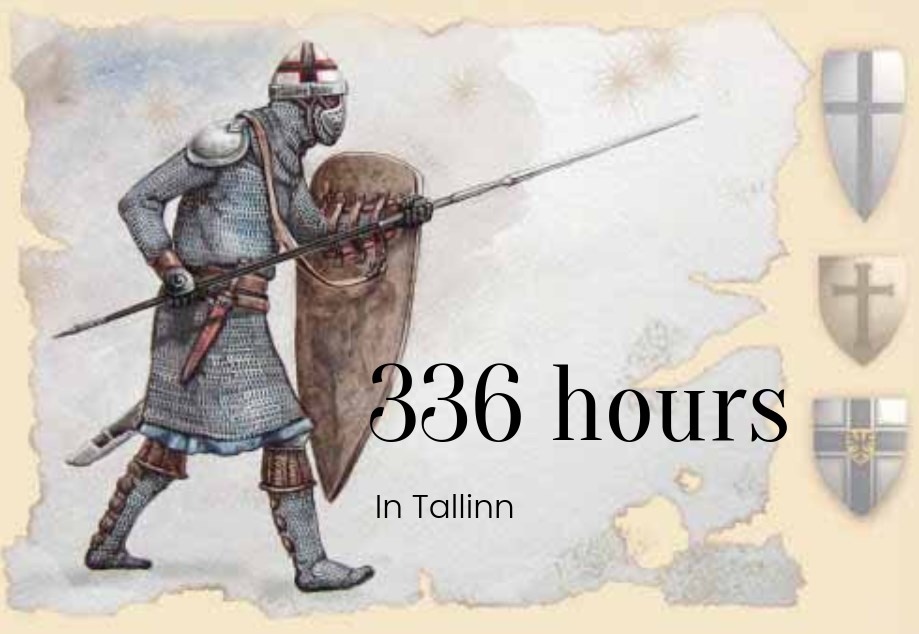Kumu Art Museum
Not far from the prime minister's residence in Kadriorg is this audaciously contemporary building by Finnish architect Pekka Vapaavuari, home to Estonia's national art collection. The film director Christopher Nolan found use for the museum's curved main hallway in "Tenet," which depicts a world in which time can flow backward.
I'm tempted to strain for an analogy involving "Tenet's" premise and this country's artistic arc, but that's just asking for a charley horse. Suffice to say the Soviet influence is strong on every floor.
There are few visual representations of that half-century of repression ― not until the wall came down, anyway ― which is why I think one has to admire Olga Terri very much for working on the margins in the 1940s with muted grays and browns on the subjects of terror and betrayal. The Soviets wanted simple, life-affirming art and music from its satellites, and she wasn't in the mood to play along.
In "Fear" (1949, the year of Estonia's biggest mass deportation) a woman is shown with her hand pressed tightly to her mouth ― maybe a fear reflex, maybe an attempt not to say something she'll regret.
Her "Kiss of Judas" (1945) came at a time when people lived in constant worry of informers and arrest. Snitches and infiltrators eventually did in the Forest Brothers, but everyone was at risk. Nothing is easier than putting a letter in the post.
Even in the decade before the Soviet annexation, preference was given to subjects of work, family, patriotism, nationhood. This was a global phenomenon after the Great Depression. The Estonian artists of the 1930s seemed to be having fun with light and color, albeit through a patriotic prism.
I love "View From Toompea Hill" (1924) by Arnold Akberg. Geographically speaking the hill is a small elevated table in old Tallinn with a lot of pastel-hued mansions and pedestrianized alleys, and after two weeks here I feel like I can find my way around there blindfolded. More fun without a blindfold though, because the views are great.
The fourth floor is devoted to strictly Soviet themes ― huge canvases showing union meetings, military discussions, farmwork. The vibe is one of a fawning neoclassicism. These are all Estonian artists, mind you.
"Estonian Red Army Soldiers With Lenin and Stalin (1952) by Elmar Kits and Evald Okas.
"Grain for the State" (1953) by Viktor Karrus.
Shall we visit the fifth floor? Are you sure? Let's put it this way. When you're about to leave the museum, you are invited to leave your impressions on a bulletin board, and somebody beat me to it.
Yes, visitor. Thank you. "Fifth floor is creepy." I couldn't have said it better.
But let us be careful here. I do not know what it is like to live with an occupying force for 51 years (regardless of any residual nostalgia for that time), much less what it is like to emerge from such conditions.
So when I see an exhibit of a guy screaming at the camera on an audiovisual loop, I think, hey, this is an honestly earned voice. Watching a grunting actor pull a plough with a rope tied ― well, tied to his junk ― I remain slow to judge (Jaan Toomik's "Untitled [Man]" 2001).
And this poor woman, the museum staffer pictured below, has to sit there hour after hour listening to these howls and groans ― I hope she earns a premium, or at least a rotation in the 19th-century room.
"Speed III" (2004) by Kaido Ole.
Please protect this little country, twice the size of New Jersey but with fewer people than San Diego.
It's got enormous courage and at times seems more Western than my own, and more committed to our values.
Kumu Art Museum
Weizenbergi 34/Valge 1
Mon. closed
Tue.-Wed., Fri.-Sun. 10 a.m.-6 p.m.
Thu. 10 a.m.-8 p.m.
15 euros














